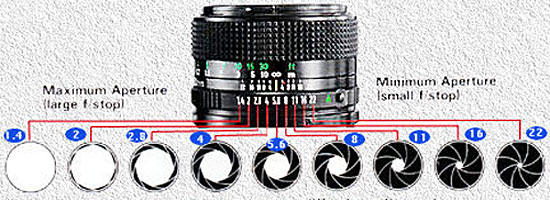Deshrouding the Mystery: What Does 'f' Mean on a Camera Lens?
Introduction
Ever looked at your camera lens and wondered what the 'F' denotes? The 'F' on the camera lens is a crucial element of photography that, when understood, can significantly enhance your photography skills. In this comprehensive article, we will demystify and explain the 'F' and its influence on a camera lens. Our aim is to assist you in leveraging this knowledge to create stunning photographs.
Uncovering The Identity of 'F' in Camera Lenses
Looking closely at any camera lens will reveal the presence of an 'F' - it's not accidental or arbitrary but rather an integral part of your lens' makeup. So, what does it mean?
The 'F' on a camera lens stands for 'F-stop' or 'F-number'. Here's how it adds up:
- F-stop: Denotes the aperture setting - or the lens's 'eye'. It has the crucial job of controlling the amount of light that enters, impacting the exposure of your shot.
- Focal Length: This is what the 'F' depicts; it is essentially a fraction. The focal length of your lens (the distance from the lens to the image sensor when the subject is in focus), over the diameter of the aperture, results in the 'F-number' or 'F-stop'.
For example, a 50mm lens with an aperture diameter of 12.5mm will have an F-number of 4 (50 ÷ 12.5 = 4).
- Importance of F-number: Lower f-numbers mean a wider aperture and brighter exposure as more light is allowed in. On the flip side, higher f-numbers represent a narrow aperture, reducing light entrance and creating a darker exposure.
In essence, understanding this fundamental principle gives you control over your image's brightness, depth, and ultimately, its mood and effectiveness.

Why Does the 'F' Matter in Your Photography Practice?
You may question, why exactly should the 'F' matter when taking photographs? This little 'F' creates big changes in the outcome of your pictures and here's how:
- Determining Exposure: The 'F' setting manipulates the exposure of your images. This, essentially, means controlling the amount of light that hits the image sensor of your camera. An appropriately tweaked 'F' setting can yield perfectly balanced light in your photos.
- Influencing Depth of Field: 'F' has a powerful influence over the depth of field of your photographs. Efficient control of focus and blur for desired visual effects is possible through manipulation of your lens's 'F' setting.
- Versatile Photography: Adroit utilization of the 'F' on your camera lens allows you the flexibility to create an array of atmospheric effects. Such skills can set you apart as a photographer, be it for stunning portraits, awe-inspiring landscapes, or intricate macro shots.
This understanding of the role 'F' plays in capturing images will give you greater control over your photography. It will arm you with the expertise to alter the mood, focus, and light in your images, enhancing the overall quality of your work.
How does 'F' Shape the Quality of Your Photographs?
Navigating the influence of the 'F' number on your pictures centers around two pivotal aspects: its impact on light, brightness, and exposure and its effect on the depth of field and focusing.
The 'F' Effect: Interplay with Light, Brightness and Exposure
The 'F' number has a central role in determining how light or dark your image appears. Here's how it works:
- Lower 'F' numbers: These numbers denote a broader aperture, which allows more light to reach the camera's sensor. Consequently, images turn out brighter. This light control proves beneficial in conditions where lighting is deficient.
- Higher 'F' numbers: In contrast to lower 'F' numbers, higher ones denote a smaller aperture, limiting the light that reaches the camera's sensor. Therefore, the resulting images are darker, an effect often advantageous under overly bright conditions.
Impact of 'F' on the Depth of Field and Focusing
Besides influencing the brightness and exposure of an image, the 'F' number also significantly co-determines the picture's focus field. Here's how this functions:
- Lower 'F' numbers: A smaller 'F' number results in a shallow depth of field. The consequence is that one specific area in the image will be in sharp focus, while the rest of the image will appear blurred. This effect is beneficial when you desire to highlight a single subject, such as in portrait photography.
- Higher 'F' numbers: Higher 'F' numbers give a wider depth of field, ensuring most, if not all of the image, appears in sharp focus. This effect is particularly useful when capturing landscapes as it ensures everything from the foreground to the background is in focus.
The visual storytelling of your photograph depends significantly on how you control the 'F' number. Balancing it according to the light conditions and your desired focus area will result in the capture of engaging and dynamic images.
What is the Relationship Between 'F' and Other Camera Settings?
In photography, understanding the relationship between the 'F' and other camera settings is crucial. Particularly, the dynamics among 'F', shutter speed, and ISO - the three primary components of the exposure triangle, can be a game-changer. Knowing how to balance these settings can be the difference between a good picture and a great one.
Navigating the 'F'-Shutter Speed-ISO Triad: Keys to Success
The 'F' or aperture, shutter speed, and ISO work together to determine the final exposure of your photograph. The idea is to balance these settings according to your photographic vision and the existing lighting conditions.
- Hex Workings with Aperture: Lower 'F' numbers mean more light is allowed into the camera, which can be balanced with higher shutter speeds to freeze motion. If the lighting condition is already favorable and you don't want to increase your shutter speed, you can decrease the ISO instead for a less noisy and sharper image.
- Hex Workings with Shutter Speed: Higher 'F' numbers limit the light entering the camera. If you want to capture motion blur, then a slower shutter speed will be necessary. However, if the light is too low for a good exposure, you might need to raise the ISO. This allows your camera to become more sensitive to light, although it might introduce noise to your image.
Balancing these settings isn’t a hard and fast rule but more of an art that you perfect over time. Experimenting with different combinations will allow you to understand the relationship among these settings better, leading to more captivating images.

Mastering the 'F': Practical Usage Tips For Different Photography Scenarios
The judicious use of 'F' or the F-number can bring your images to life and narrate a story with clarity. Below we've compiled a few recommendations on how to effectively apply the 'F' setting to different photography scenarios:
- Portrait Photography:
A smaller 'F' number is your go-to setting for portrait photography. It will blur out the background, bringing your subject into sharp focus and making them stand out.
- Landscape Photography:
When you aim to capture the verdant valleys or the breathtaking cityscape in all their glory, go for a larger 'F' number. It enables a wider depth of field, ensuring all elements within the frame from the foreground to the background are in sharp focus.
- Low Light Photography:
A lower 'F' number allows more light to pass through the lens onto your camera’s sensor, making it a good choice when shooting in low-light environments. This setting enables crisper and brighter images even without ideal lighting conditions.
- Action Photography:
For shooting high-action scenes like sports events, the ‘F’ plays a critical role. A lower 'F' number allows faster shutter speeds, enabling you to freeze the action and capture all the thrilling moments clearly and sharply.
In conclusion, the use of 'F' on a camera lens should be adaptive, changing based on the scene's demands and your unique creative vista. Always remember, the 'F' is not a universal fit. It needs mindful adjustment and experimentation to achieve the desired outcome.
Conclusion
Understanding the 'F' on a camera lens broadens your photography scope, equipping you to take control of your image outcome. Become mindful of the 'F', explore and experiment, and let this knowledge fuel your photography passion and craft.
Related FAQs about what does f mean on camera lens
How can I adjust the 'F' on my camera lens for better photos?
Adjusting the 'F' on your camera lens depends on what you're trying to achieve. For sharp background detail, increase the 'F' number (narrow aperture). For focusing on a single subject with a blurred background, reduce the 'F' number (wider aperture). This adjustment can be made from the Aperture Priority mode (AV or A) on your camera.
In what scenarios would changing the 'F' be particularly beneficial?
Changing the 'F' on your camera lens would be particularly beneficial in varied lighting conditions and for controlling depth of field. Lower 'F' numbers let in more light and are great for low-light conditions and portraits. Higher 'F' numbers are beneficial for bright conditions and landscape shots to capture more detail.
How does 'F' interact with other settings on my camera?
'F' on your camera lens interacts with the shutter speed and ISO settings to create the exposure of your photos. For instance, a lower 'F' number (wider aperture) allows more light, enabling a faster shutter speed to freeze motion or a lower ISO for sharper images with less noise.


